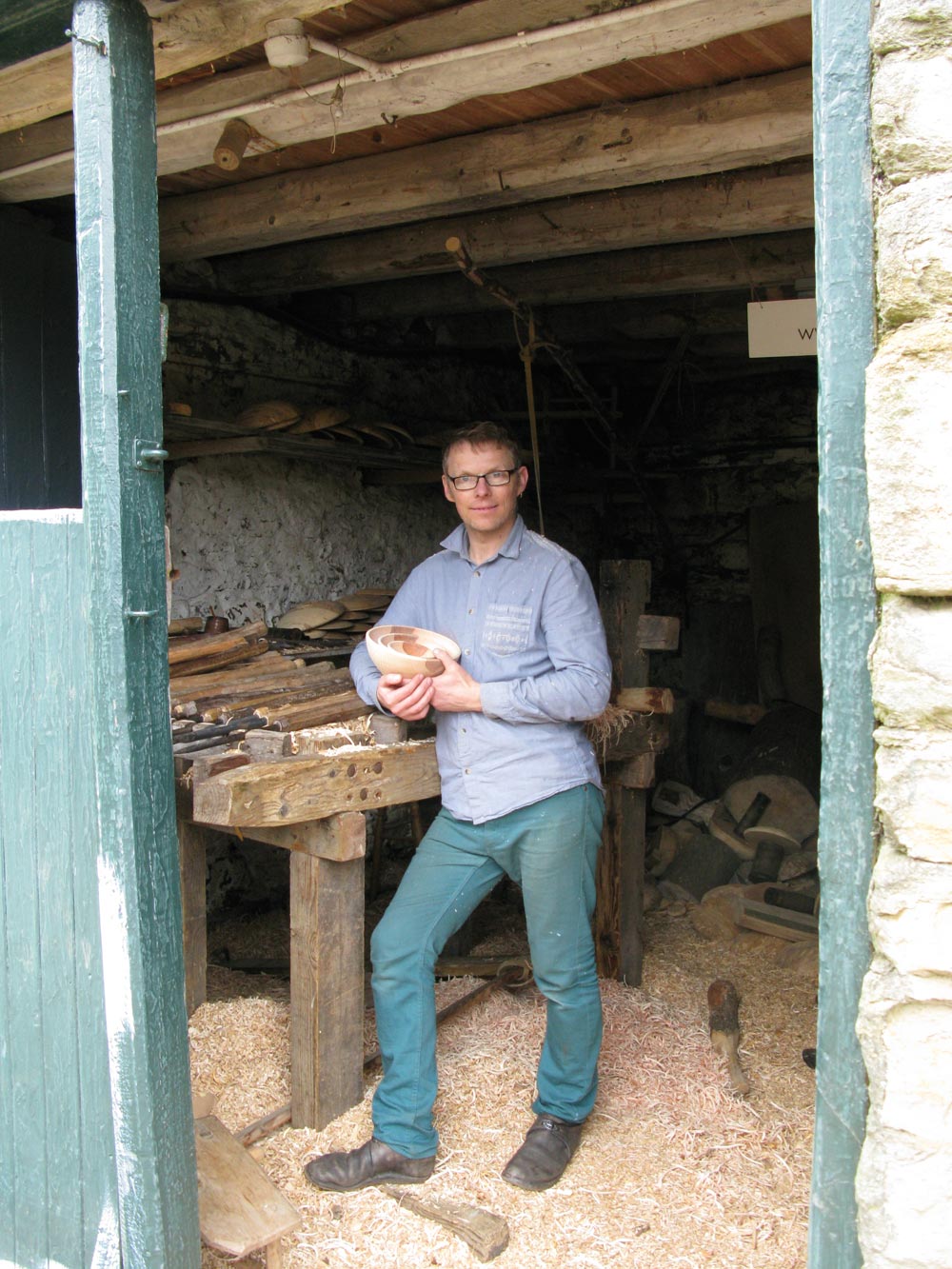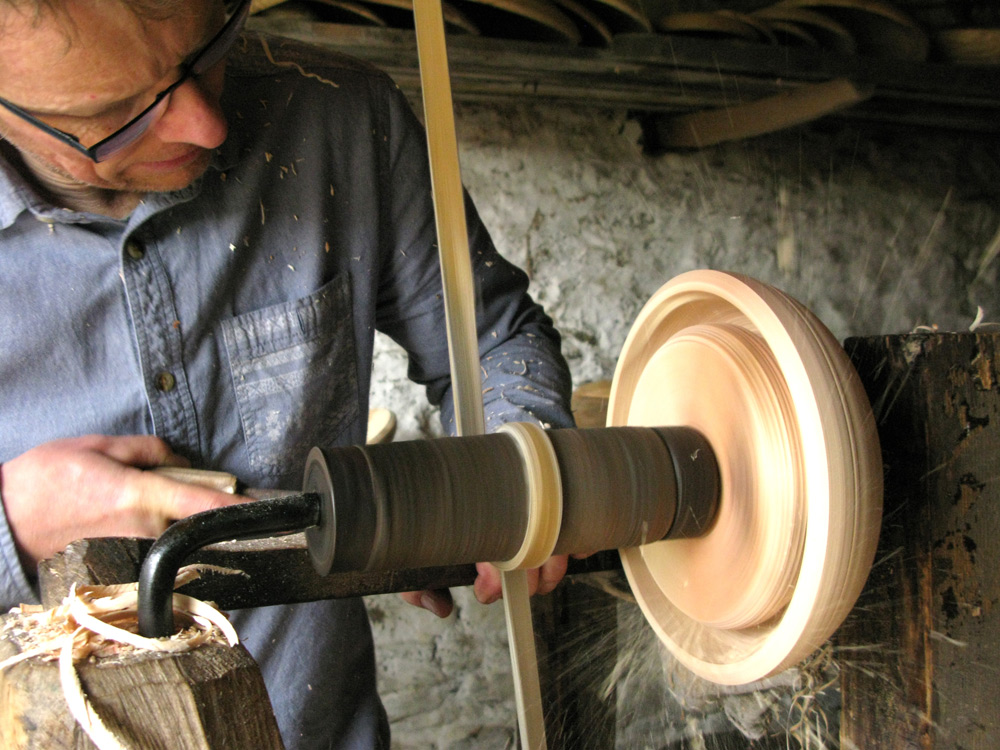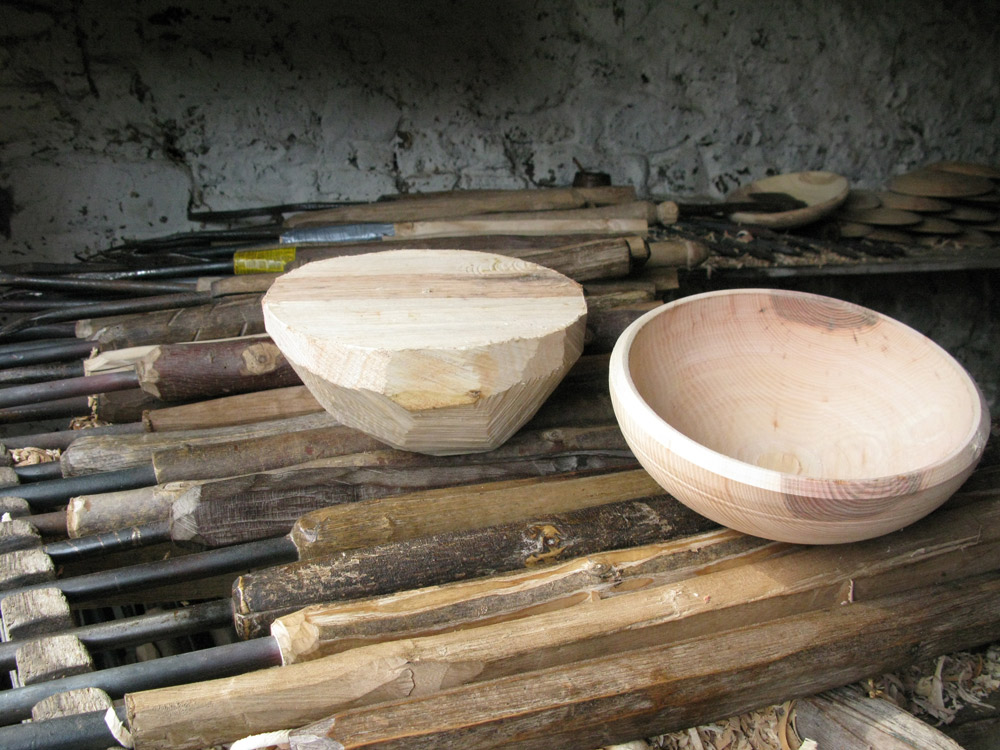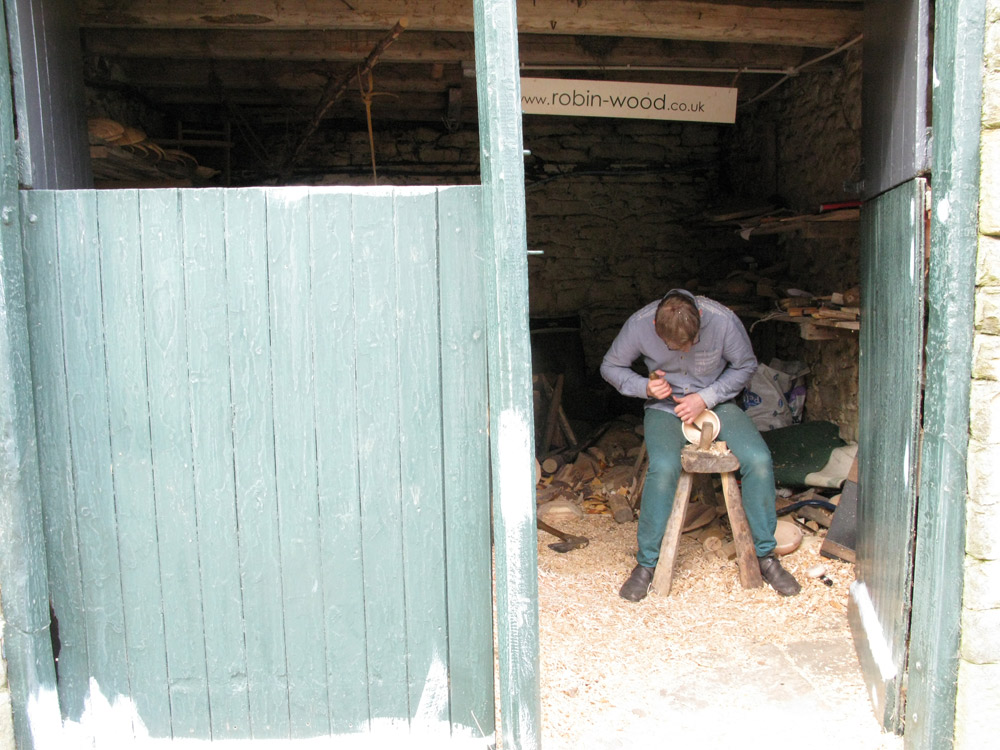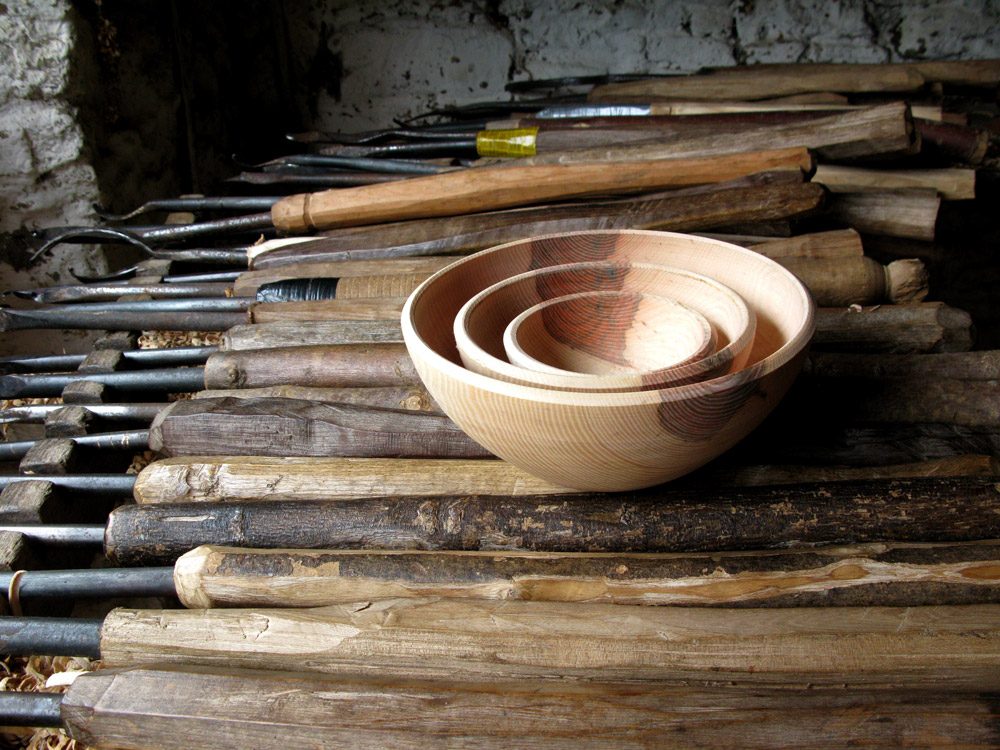Robin Wood
The following extract is taken from ‘The Man Who Made Things Out of Trees’.
Walking into Robin’s workshop was like stepping back into the Middle Ages. Piles of wood were strewn on the floor. There were wooden stools, clubs and various tools I could not identify. A single shelf along one of the whitewashed stone walls was piled with old wooden bowls, boards and plates. At the back of the byre, where the daylight had lost its confidence, I could make out the silhouette of a woodworking bench. On a table inside the door lay dozens of long, wooden-handled chisels, which Robin called ‘hook tools’. The room was dominated by the pole lathe – a simple framework of posts and beams with a ten-foot springy pole attached horizontally, above head height.
Lathes were first used for wood-turning in Europe and Asia 2,500 years ago, but this type of pole lathe was probably popular from around AD 500 and had its heyday in medieval Europe. It was probably developed for bowl-turning and then later adapted for turning the parts of chairs. Robin’s pole was a rowan sapling, but it could just as easily have been ash, he said. The shape and size are more important than the species.
Walking into Robin’s workshop was like stepping back into the Middle Ages. Piles of wood were strewn on the floor. There were wooden stools, clubs and various tools I could not identify. A single shelf along one of the whitewashed stone walls was piled with old wooden bowls, boards and plates. At the back of the byre, where the daylight had lost its confidence, I could make out the silhouette of a woodworking bench. On a table inside the door lay dozens of long, wooden-handled chisels, which Robin called ‘hook tools’. The room was dominated by the pole lathe – a simple framework of posts and beams with a ten-foot springy pole attached horizontally, above head height.
Lathes were first used for wood-turning in Europe and Asia 2,500 years ago, but this type of pole lathe was probably popular from around AD 500 and had its heyday in medieval Europe. It was probably developed for bowl-turning and then later adapted for turning the parts of chairs. Robin’s pole was a rowan sapling, but it could just as easily have been ash, he said. The shape and size are more important than the species.
The pole was anchored at one end. From the free end, a strap ran down to a wooden foot treadle on the floor. This strap is wrapped around a spiked shaft or ‘mandrel’, which is knocked into the block of wood about to be turned. The turner presses the treadle down, the mandrel revolves, the block spins forward and the pole bends; release the treadle, the pole springs straight and the block spins back again. The mandrel and the block of wood rotate on two metal spikes fixed to uprights, one of which is adjustable to make sure the block is secured as it spins. As the treadle is depressed, the turner takes a cut from the wood with a hook tool, and slowly shapes the bowl.
Many different types of lathe can be used for turning wood. Wheelwrights favoured great wheel lathes for turning large elm hubs; water-powered lathes were once common across Europe, wherever steep streams ran; and steam-powered lathes, and later electric-powered lathes, released wood-turners from reliance upon the landscape and the weather. There is, though, something ascetic, holistic and even beautiful about the pole lathe, which sets it apart. I understood how it worked immediately. It is powered by human effort working in unison with the inherent spring in a sapling tree. I thought of a quote from Roy Underhill, the American woodworker and author: ‘We have spent millennia devising ways to avoid this sort of physical work, and yet we always return to it. It is a part of us.’
Robin had offered to turn not just one bowl; he had generously agreed to make a ‘nest of bowls’ from a piece of my ash – a set of three bowls, one inside the other, out of the same bowl blank, whereby the hollow of the largest bowl is cut out in a perfect hemisphere that forms the outside of the next bowl, and so on until the whole blank has been used up. Making nests is difficult because the turner can neither see the cutting edge of the tool while it is working between bowls, nor readily gauge the thickness of each bowl: ‘It’s the Holy Grail of turning,’ Robin said.
Robin chose a small mandrel and found the centre of the bowl blank by eye: ‘There’s no perfect place. There are many variables and it’s a judgement,’ he said, before gouging out a small piece of wood. The mandrel was then driven in with eight firm wallops of the hammer. He span the bowl blank upside down to check it, wrapped the strap around the mandrel and, with a wooden mallet, fixed it into the lathe. He pulled a hook tool off the rack and sharpened the metal-cutting edge with a stone. He stood straight, inhaled a great lungful of air as if preparing to swim a length underwater, and pressed down hard on the treadle for the first time. The bowl span. The wood rasped furiously, as the metal kissed it. Tiny streaks of ash flew off and caught the light, like sparks from a Catherine wheel. In a moment that transcended the ages, the flecks floated timelessly to the floor.
‘This is the first cut. I’m feeling my way into the wood and getting a sense of how it’s going to turn,’ Robin said. After half a minute, he looked up and flashed a smile: ‘Yep, it’s nice. I like it. I like your tree.’
Video
Watch the bowls being made.
